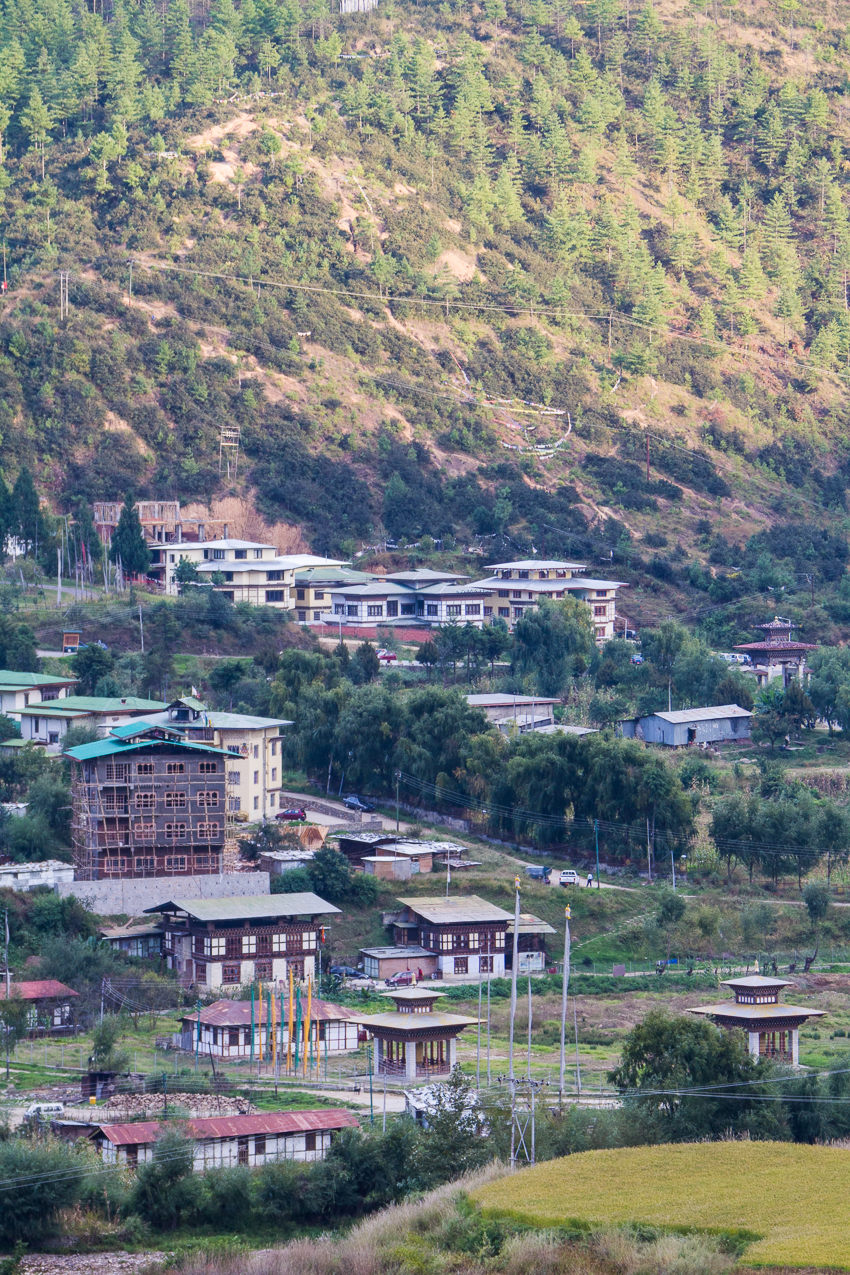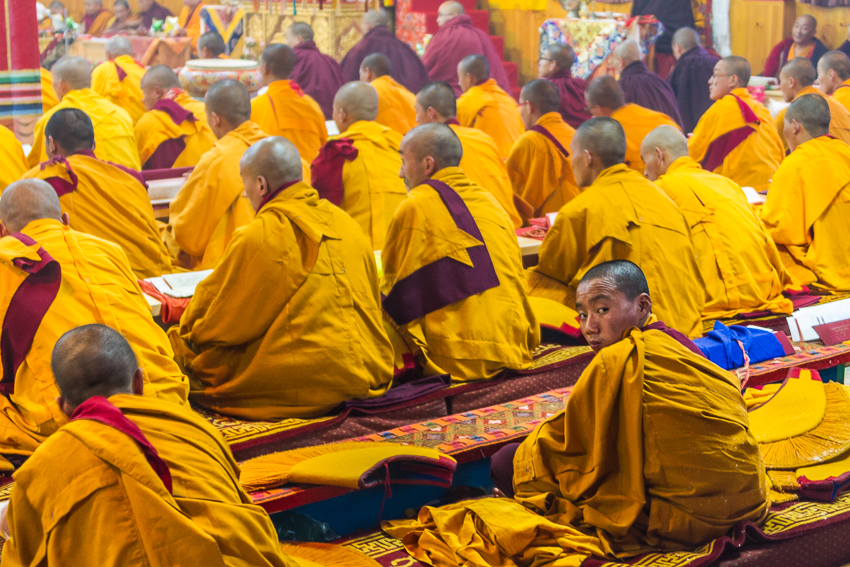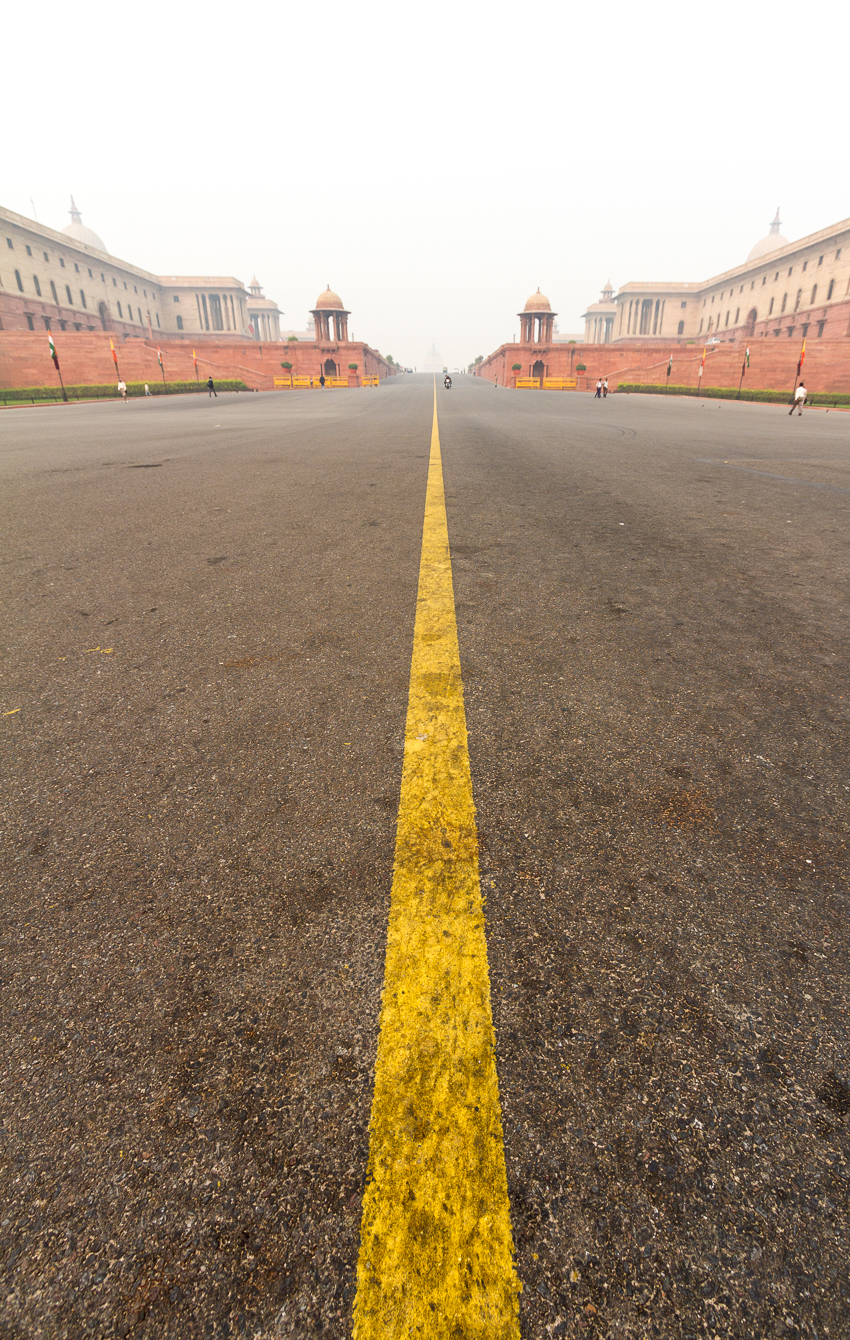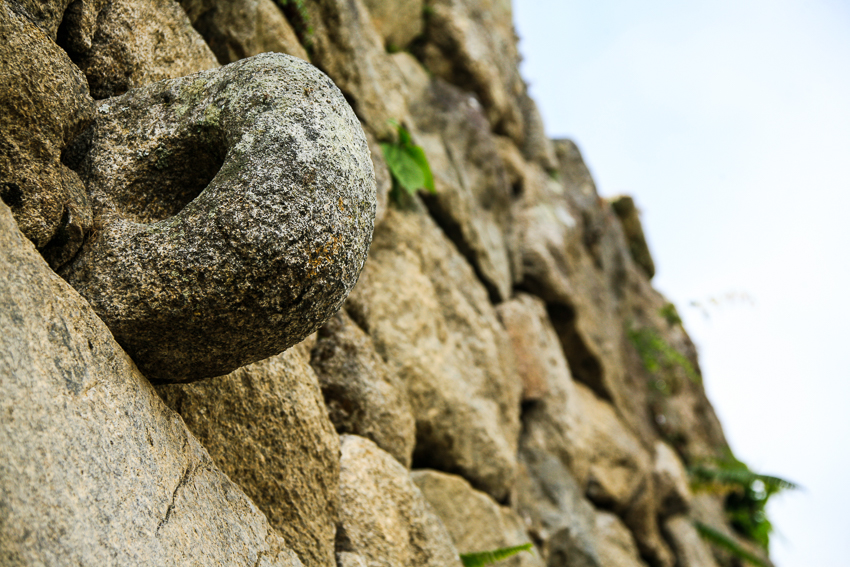The world is filled with incredible subjects: countless landscapes change over the course of each day as the light passes through them; cultures dress in vibrant colours and engage in mesmerizing rituals. We revel in these moments, snapping them with our cameras to bring back stories about the places we’ve been. But, how often have you looked through a friend’s travel photos and found your mind wandering?
The problem? You’re bored. Even when they’re depicting an incredible journey, boring photos can still make you want to fall asleep – something I call BTPS (boring travel photo syndrome). We’ve all felt the symptoms of BTPS at some point in our lives. To help avoid this, here are a few tips on what not to do when taking travel photos on your next adventure.
Don’t shoot flat images
Here is an example of a flat image; while the subject is interesting, the image itself lacks depth. Depth gives your images more punch, more focus.

Boring Bhutan.
Do check to see if your camera has an aperture priority mode. If so, experiment with apertures set at lower numbers (like f/3.5 or f/1.8). Lower settings will help produce less depth in your photos, meaning some of your scene will be out of focus – and that’s a good thing. It lets the viewer focus on the most compelling element in the frame.
Do get closer. If your camera doesn’t have aperture priority, or if you’re using your phone, physically getting closer will add depth of field. (Zooming in works, too.) Start by taking a photo, and then get a little closer, and then one step closer still. Compare the images to see which one is the most engaging.

Getting closer gives your viewer the feeling they are there, too.

Getting closer still makes a compelling and memorable image.
Don’t cram it all in
Not only can your images be flat, they can boring if your viewer doesn’t know where to look.
Do use the above “step closer” tip as a starting point to help differentiate your subject (where you want your viewer to focus).
Do add in some simple tricks, like contrast or leading lines. Contrast can be the difference between light and dark, but it can also be one object contrasting with others in the scene, like this.

Monks in Bhutan.
Leading lines are a simple way to point the viewer’s gaze to a specific place within your photo. The lines naturally take them in a particular direction, taking your viewer on a journey.

Road in Delhi, India.
Don’t take pictures of everything
Do take the time to examine your scene with the camera down. Look around and soak it all in. Find a part of the scene that best describes what you’re experiencing. Imagine you can only take two photos here and make ‘em count.

There is so much going on in this cathedral in Malaga, Spain.
Otherwise, you’ll get a number of images that more or less look the same, and arguably, a number of images that don’t really depict what it was like to be there.
Don’t miss the details
Try and consider how your photos will be viewed. If all your shots of Machu Picchu focus on the scale of the landmark, they’ll all read the same, and your viewer’s eyes may glaze over.

Door hinge at Machu Picchu.
Do go for details. Your friends and family want to know what it’s like to be there. In real life we see things both close up and far away; try and recreate that experience with the images you take.
Don’t take selfies (the wrong way)
This might be a contentious thing to say, but hear me out: step away from the selfies. Just like it’s better not to cram everything into a frame, the same rule should apply when we’d like to be in the photo as well. So if you want to document yourself in the moment, hand your camera to someone and ask them to take your photo.

Proof that I was somewhere.
Do make the location the star and yourself a supporting player. Highlight your location and add yourself into the mix sparingly. Fit yourself into the scene, rather than cover it.

Fitting myself into the scene in Dubai.
Boring travel photo syndrome – the cure starts with you! Commit to bringing back inspiring, interesting, focused and dazzling images. Commit to leaving the boring, flat and selfie images out of your repertoire.
Go forth and photograph the world!























